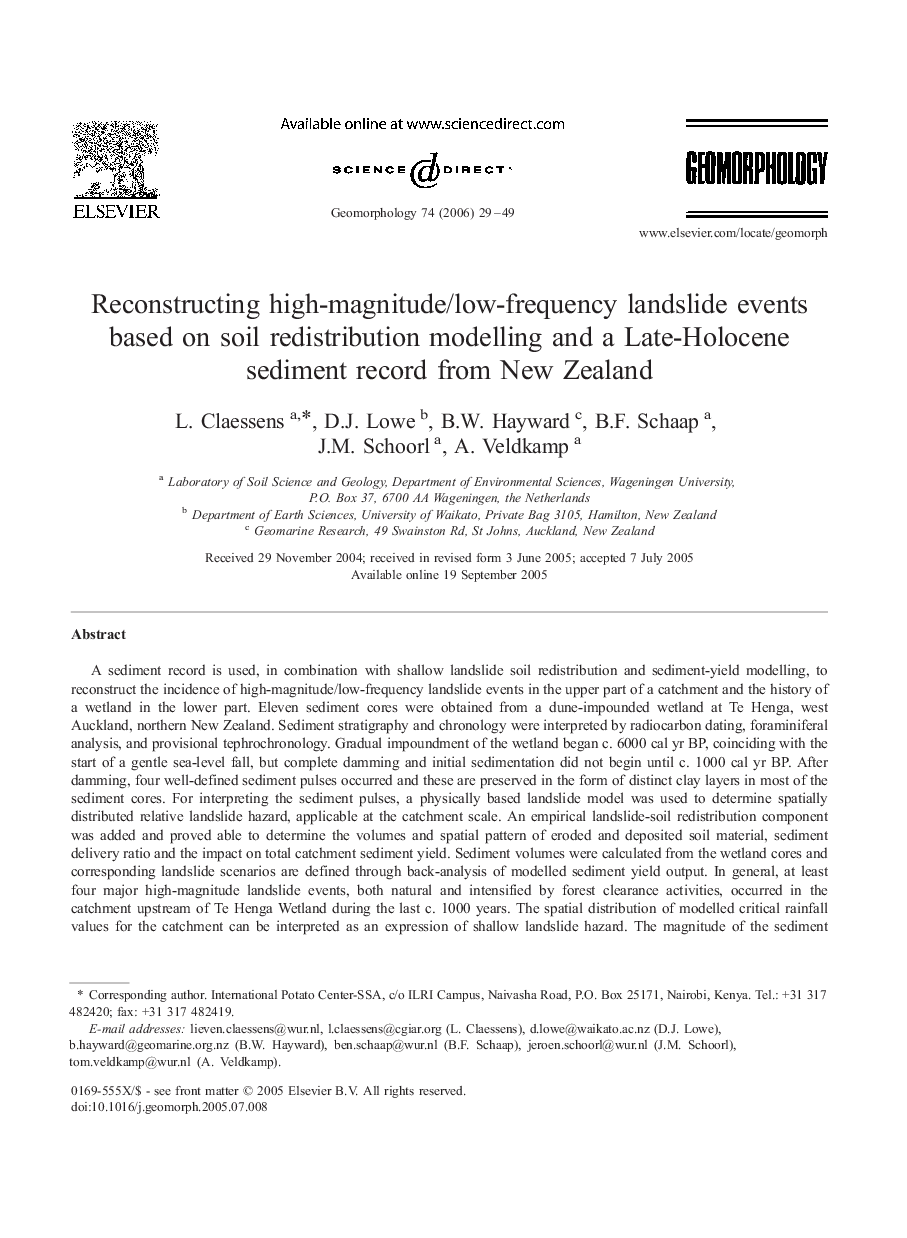| کد مقاله | کد نشریه | سال انتشار | مقاله انگلیسی | نسخه تمام متن |
|---|---|---|---|---|
| 4687632 | 1635603 | 2006 | 21 صفحه PDF | دانلود رایگان |

A sediment record is used, in combination with shallow landslide soil redistribution and sediment-yield modelling, to reconstruct the incidence of high-magnitude/low-frequency landslide events in the upper part of a catchment and the history of a wetland in the lower part. Eleven sediment cores were obtained from a dune-impounded wetland at Te Henga, west Auckland, northern New Zealand. Sediment stratigraphy and chronology were interpreted by radiocarbon dating, foraminiferal analysis, and provisional tephrochronology. Gradual impoundment of the wetland began c. 6000 cal yr BP, coinciding with the start of a gentle sea-level fall, but complete damming and initial sedimentation did not begin until c. 1000 cal yr BP. After damming, four well-defined sediment pulses occurred and these are preserved in the form of distinct clay layers in most of the sediment cores. For interpreting the sediment pulses, a physically based landslide model was used to determine spatially distributed relative landslide hazard, applicable at the catchment scale. An empirical landslide-soil redistribution component was added and proved able to determine the volumes and spatial pattern of eroded and deposited soil material, sediment delivery ratio and the impact on total catchment sediment yield. Sediment volumes were calculated from the wetland cores and corresponding landslide scenarios are defined through back-analysis of modelled sediment yield output. In general, at least four major high-magnitude landslide events, both natural and intensified by forest clearance activities, occurred in the catchment upstream of Te Henga Wetland during the last c. 1000 years. The spatial distribution of modelled critical rainfall values for the catchment can be interpreted as an expression of shallow landslide hazard. The magnitude of the sediment pulses represented in the wetland can be back-calculated to critical rainfall thresholds representing a shallow landslide model scenario.
Journal: Geomorphology - Volume 74, Issues 1–4, March 2006, Pages 29–49